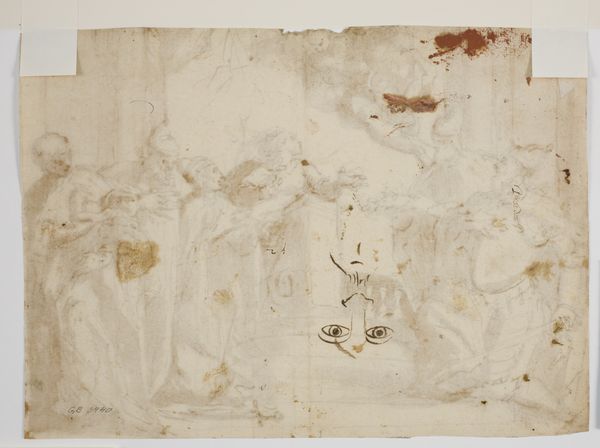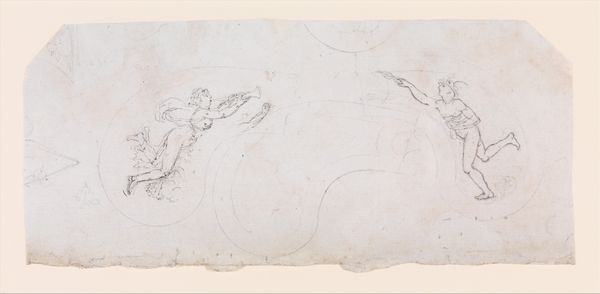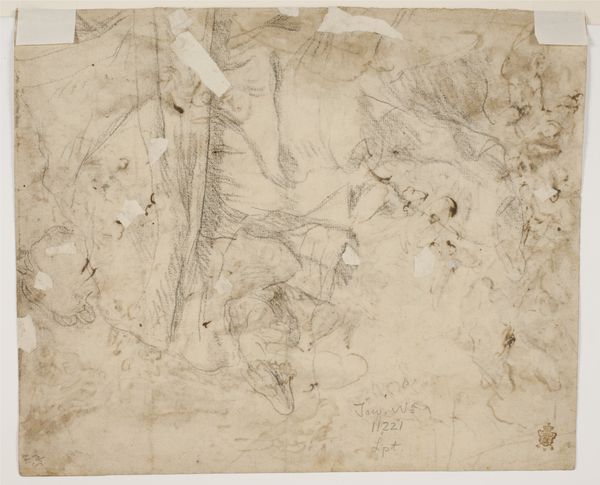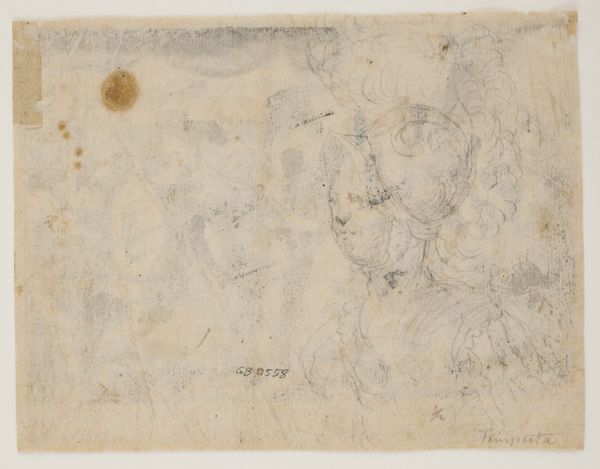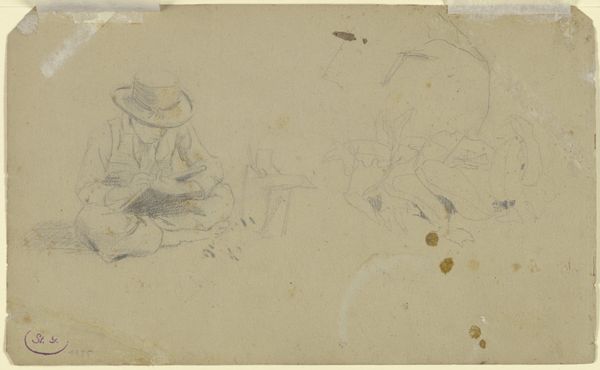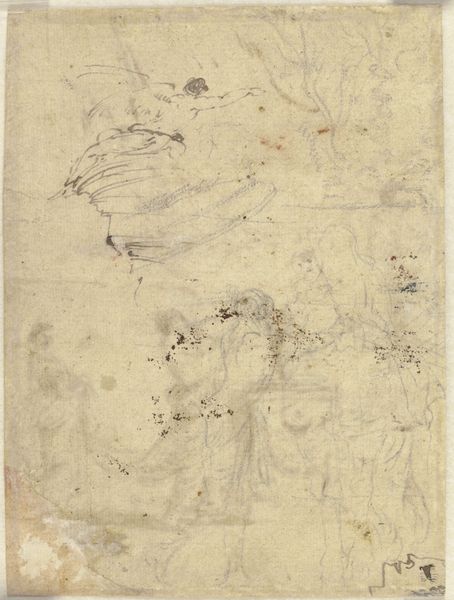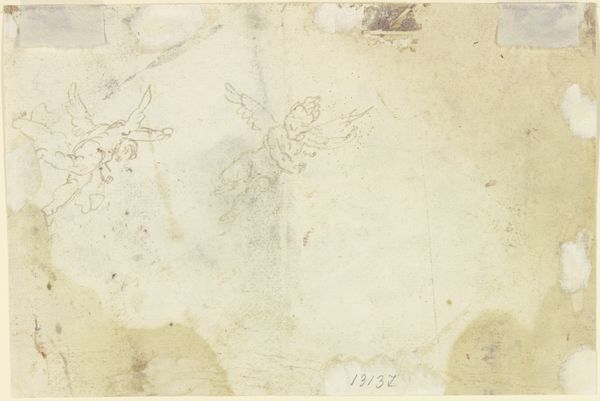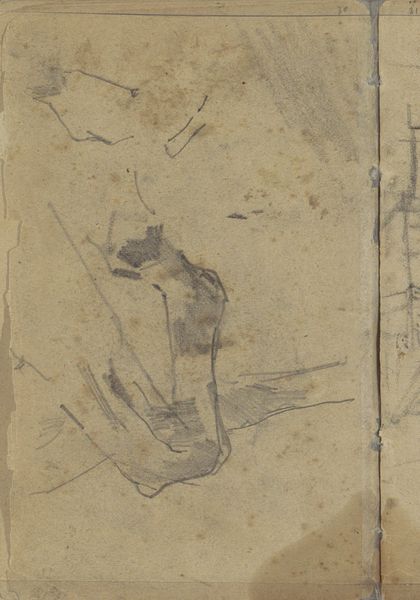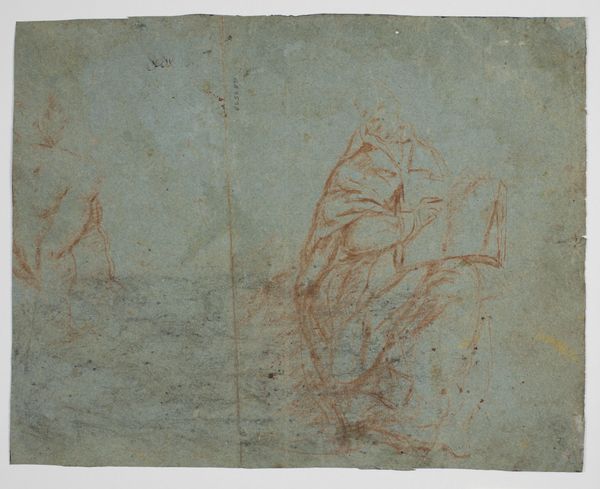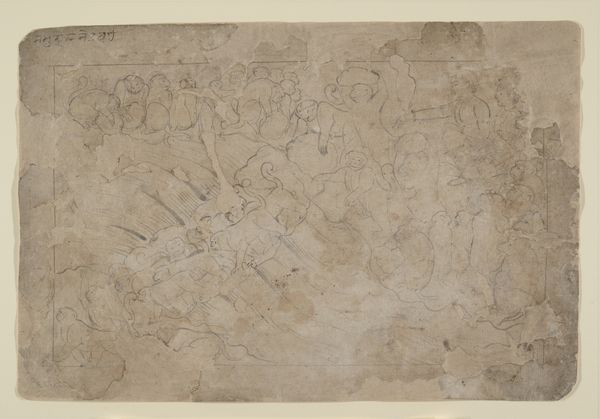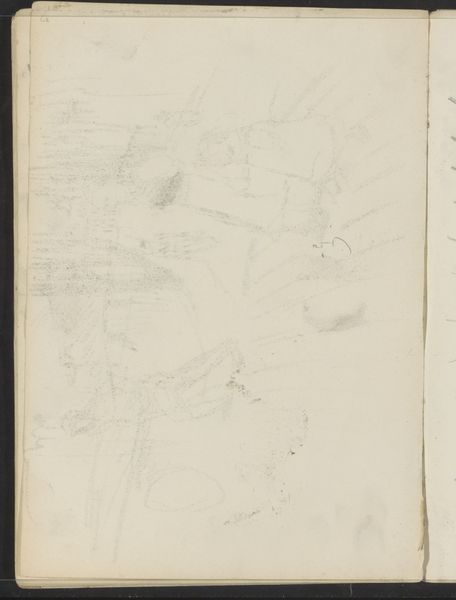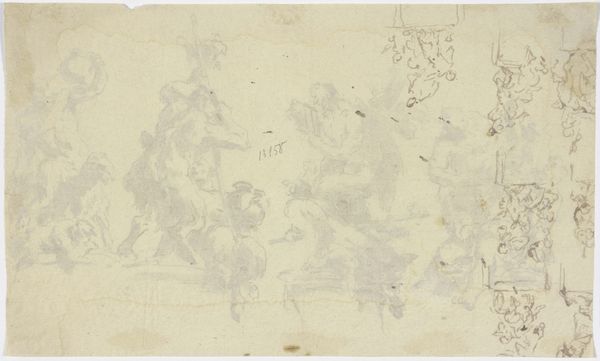
Landskabsskitse; liggende, kappeklædt figur; desuden penneprøver 17th century
0:00
0:00
drawing, paper, ink
#
drawing
#
baroque
#
landscape
#
paper
#
ink
Dimensions: 125 mm (height) x 180 mm (width) (bladmaal)
Curator: Juergen Ovens' "Landscape Sketch; reclining, cloaked figure; and pen tests," from the 17th century, drawn with ink on paper, is quite enigmatic. What do you make of its composition, particularly with those... abstract forms? Editor: Its subdued palette and loose linework immediately suggest a dreamlike or perhaps melancholic atmosphere. There's a haunting quality to the implied forms struggling to emerge. I also notice the apparent pen tests – what could they tell us about Ovens' working methods or the wider artistic practices of the period? Curator: Precisely! The existence of pen tests is integral to understanding this work—this isn't just a landscape. They demonstrate an iterative, experimental practice that sheds light on art production. These spontaneous marks contrast intriguingly with the intended imagery, don't you think? The material handling here signifies its cultural milieu. Editor: Indeed. Consider how studios functioned at that time. Drawings served various crucial roles—teaching tools, preliminary sketches for larger works, even independent art objects for discerning collectors. The cultural function of these drawings would give this picture another meaning! Curator: Note how the "reclining figure," although central, doesn't adhere to strict mimetic representation. Its structure is alluded to. That cloaked figure, nearly lost amongst the foliage. What is its intended meaning here? Editor: Given the period, allegorical interpretations arise. Is this figure representative of sadness or perhaps some form of mythological presence languishing amidst nature's grandeur? However, to pin this figure too firmly to a single historical meaning would, I think, flatten the work’s potential readings. Curator: I concur. While grounding the figure in, say, mourning traditions of the time offers context, restricting its potential symbolic value constrains our interaction with it. Ovens urges a deeper interpretation into shape and line itself. Editor: Seeing the texture and detail, I'm prompted to question how this Baroque era work interacts with institutions and wider socio-political factors. How have shifting political climates, such as patronage networks within royal courts, potentially steered the artwork and artistic circles towards their trajectory? Curator: Fascinating insights, considering both the materiality of the sketch and the complex historical threads that weave into its potential significance. We can see how seemingly humble pieces invite us into multilayered investigations of both formal and contextual elements.
Comments
No comments
Be the first to comment and join the conversation on the ultimate creative platform.
